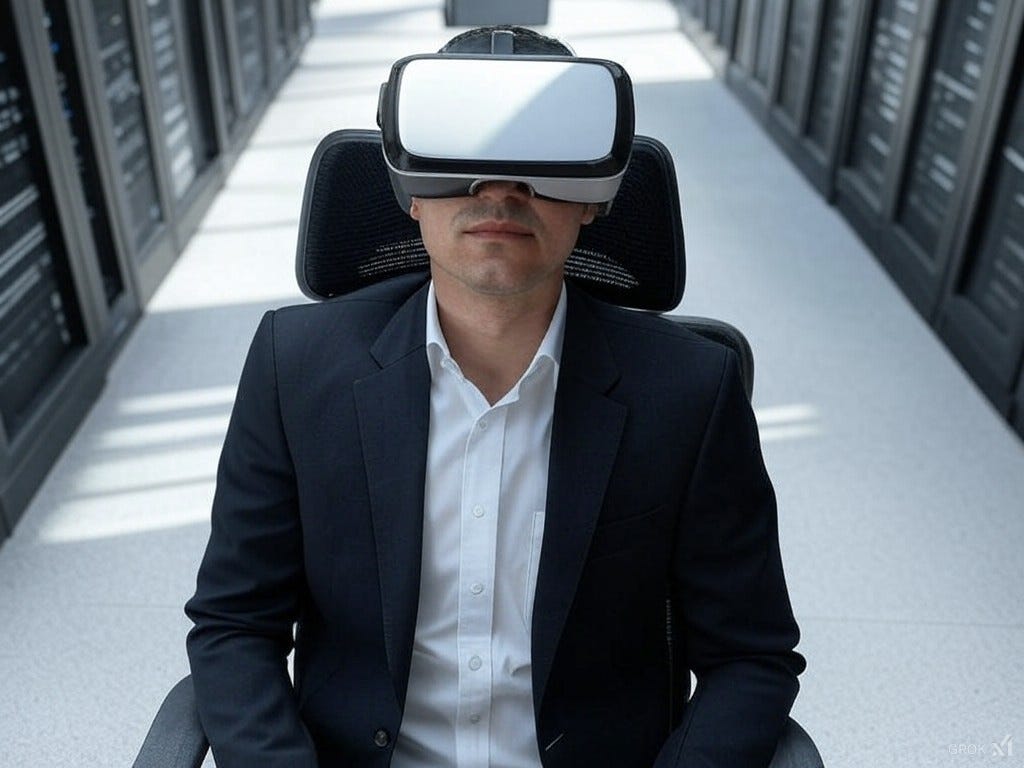360 Degree Images & Video - The Next Generation Of Data Center Assessments
Watch these videos of Virtual Reality Being Used In Site Surveys!
How Using Virtual Reality as Part of Your Data Center Assessment Will Change the Way You Do Business
In the digital age, data centers are critical hubs where the slightest inefficiency can lead to significant operational disruptions. However, managing these facilities traditionally involves physically navigating through complex environments, often with limited tools for visualization or remote collaboration.
Virtual Reality (VR) has emerged as a transformative solution, particularly through the use of 360-degree images and videos combined with VR headsets. This essay explores how VR can revolutionize data center assessments, providing links to real-world applications through YouTube videos to illustrate the practical benefits.
The Traditional vs. The Virtual
Traditional assessments of data centers rely heavily on physical presence, static imagery, and basic video documentation. These methods have their limitations, particularly in providing a dynamic, comprehensive view of the environment. VR changes this by allowing for virtual walkthroughs that can be experienced from anywhere in the world. For instance, SiteSurvey360 leverages VR to provide detailed insights into data center facilities.
Immersive Clarity with 360-Degree Imagery
The power of VR in data center management is vividly demonstrated through 360-degree imagery. This technology captures the environment in its entirety, offering an immersive experience where every detail is accessible. To see VR in action, watch how an immersive data center tour can provide a first-hand look at the inner workings of a data center, highlighting the potential for enhanced understanding and oversight.
Enhancing Decision-Making with VR Headsets
VR headsets allow users to step directly into their data centers, offering a level of interaction and detail that surpasses traditional methods. For example, this video demonstration by Siemens shows how VR can be used to simulate data center environments, allowing for strategic planning and the visualization of potential modifications or expansions. This kind of simulation can dramatically reduce the risk associated with physical alterations to infrastructure.
Business Impact: Efficiency, Cost Reduction, and Training
Operational Efficiency: VR facilitates faster, more thorough assessments. By eliminating the need for physical travel, as seen in this case study on remote data center management, businesses can conduct assessments with greater frequency and detail without incurring additional costs or time.
Cost Reduction: The financial benefits of VR are significant. A video showcasing VR in data centers illustrates how businesses can save on travel and operational costs, while also providing a safer, more controlled environment for assessments.
Training and Education: VR isn't just for assessments; it's a powerful training tool. A practical application of VR in training demonstrates how staff can be trained in real-world scenarios without the risks associated with live environments. This can lead to a more skilled, agile workforce capable of handling complex data center operations.
Security and Remote Collaboration
Security is a top priority for data centers, and VR offers a method to share facility details securely without compromising physical security. This video on VR for secure data center access shows how professionals can collaborate on projects or troubleshoot issues remotely, ensuring that sensitive information is shared in a controlled manner.
Challenges and Considerations
While integrating VR into data center management offers numerous advantages, it also presents challenges. The initial investment in VR technology, along with the need for accurate data capture services like those provided by SiteSurvey360, must be considered. Additionally, ensuring the security of virtual data models is crucial to prevent breaches.
Future Outlook
The trajectory for VR in data centers is towards even more integration with technologies like AI, which could provide real-time data overlays on VR environments, or AR for on-site maintenance guidance. As VR technology matures and becomes more cost-effective, its adoption is likely to increase, potentially leading to entirely new methodologies in data center management.
Conclusion
The use of VR in data center assessments is not merely an enhancement; it's a paradigm shift in how we interact with and manage these critical infrastructures. By providing links to YouTube videos, this essay has highlighted real-world applications and benefits, from operational efficiency to cost savings and training. Companies like SiteSurvey360 are at the forefront of this shift, demonstrating that VR can indeed transform the way businesses operate, plan, and secure their data centers. As we move forward, VR will likely become an indispensable tool in the toolkit of data center management, offering a new dimension of clarity, control, and collaboration.






